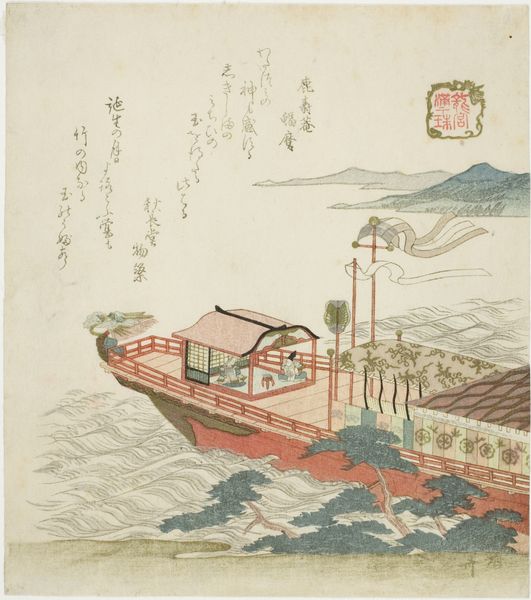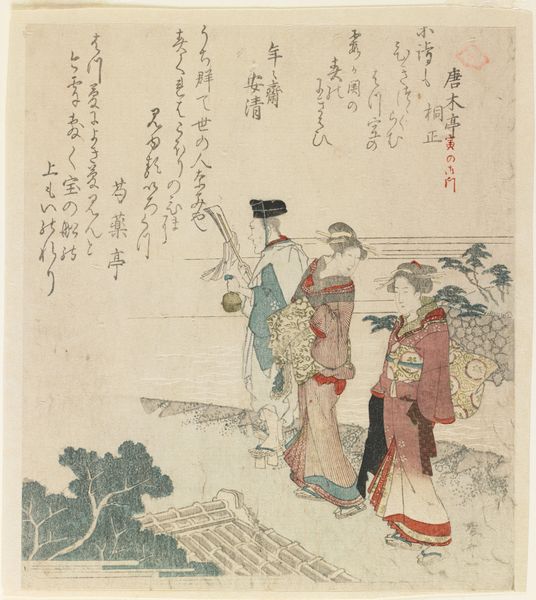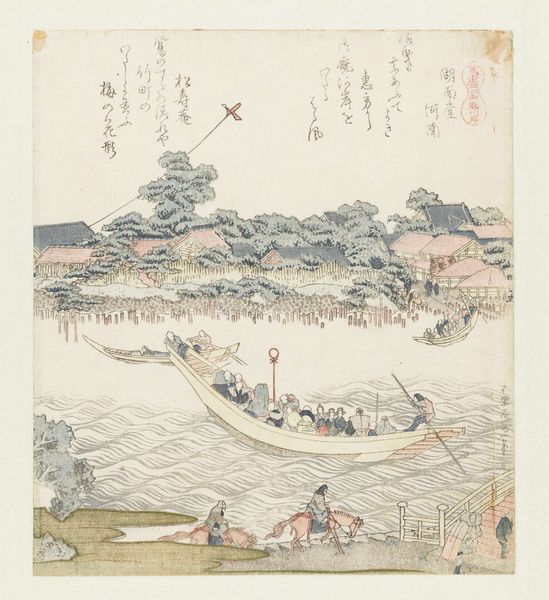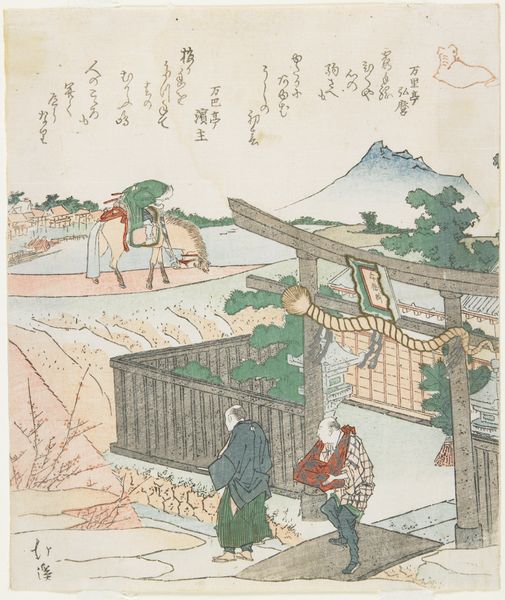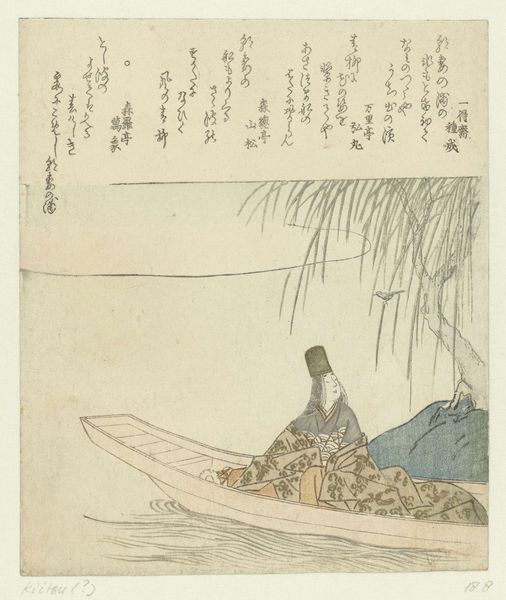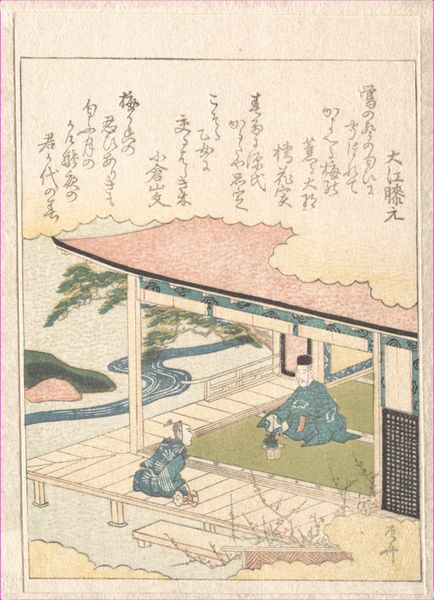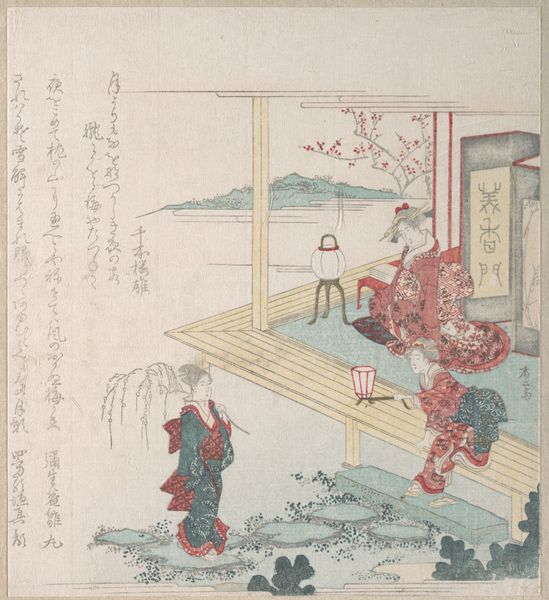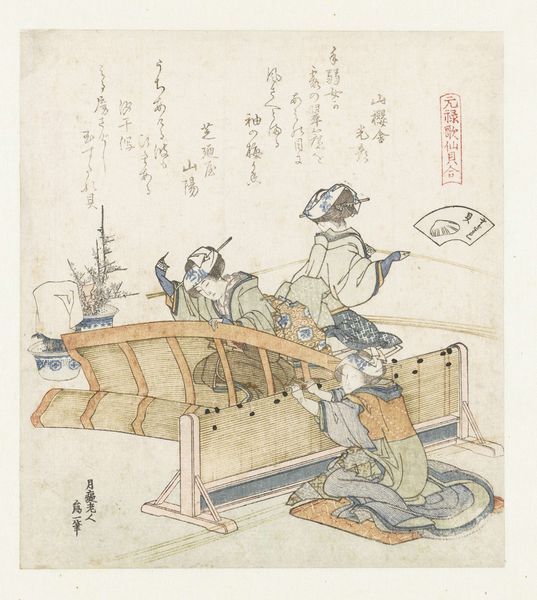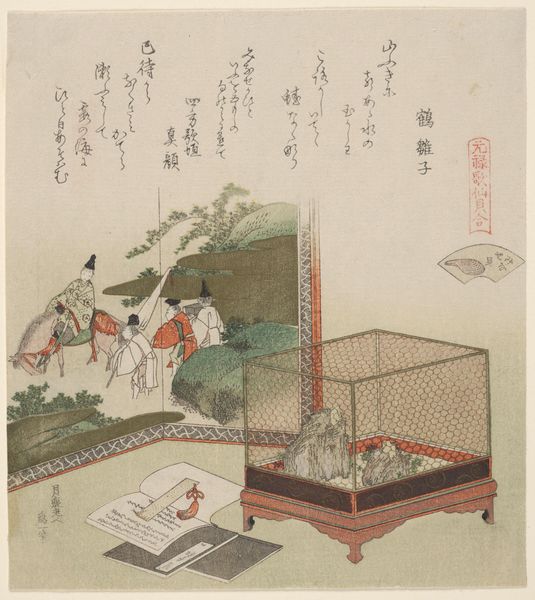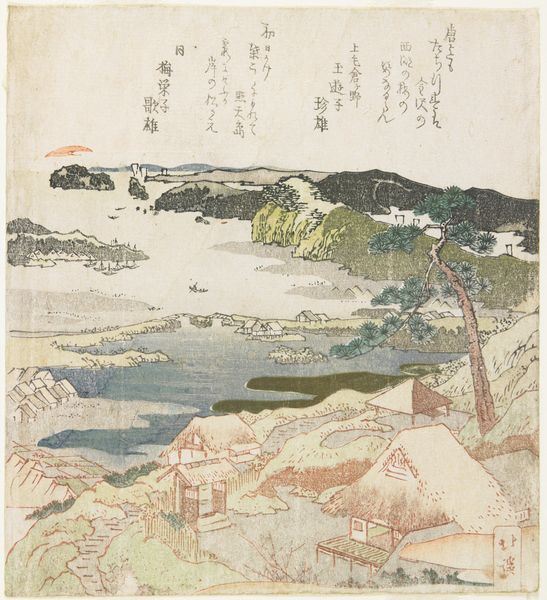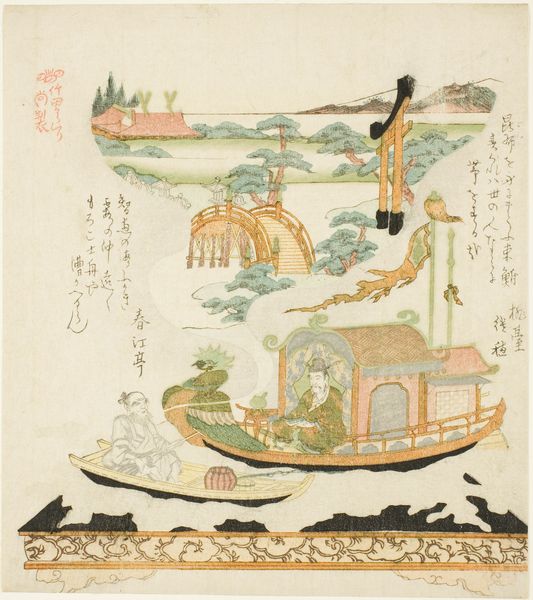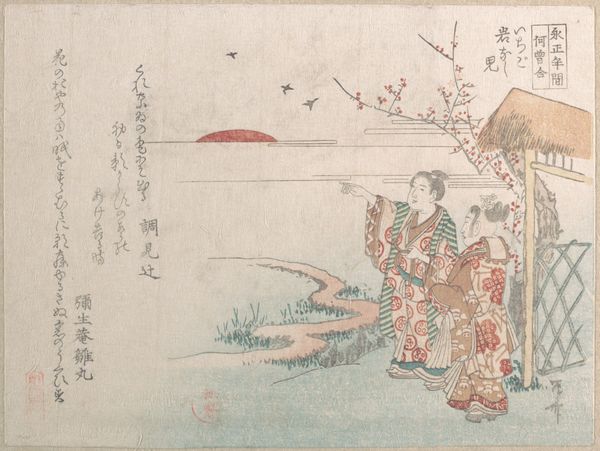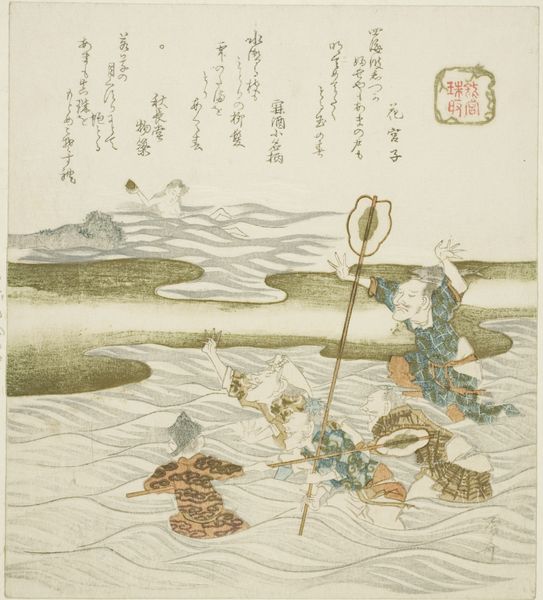
print, woodblock-print
# print
#
asian-art
#
landscape
#
ukiyo-e
#
woodblock-print
Dimensions: 20.8 × 17.6 cm
Copyright: Public Domain
Curator: This woodblock print, "Ferry Boat on the Yodo River," made by Teisai Hokuba sometime between 1815 and 1825, offers us a fascinating glimpse into daily life in Japan. The composition is deceptively simple, isn't it? Editor: It is. It shows people going about their business on boats, but I find myself wondering about their stories, especially the person using the long pole on the boat on the left. Curator: Exactly. Hokuba isn’t just depicting a scene; he's capturing a specific social reality. Look closely. Who do you think is doing most of the work, and what might that tell us about Edo society? Consider the labour involved and who is performing it. Editor: Well, it looks like most of the passengers are relaxing, while the figure on the left is hard at work, seemingly maneuvering the boat, as well as someone on another boat. Would I be right to assume that there would have been some form of class divide here? Curator: Precisely! Ukiyo-e prints like this were consumed by a broad audience, yet they often subtly reinforced existing social hierarchies. Think about who had the leisure time to enjoy these river journeys and who was tasked with facilitating them. Do you notice how the figures and natural elements are compressed in the image? How does this compositional decision affect the image and your perception of it? Editor: It definitely makes the boat feel very full and maybe even a little chaotic, perhaps emphasizing the work and labour that would go into navigating such a packed space. I’m curious about the figures on the right boat, since they appear to be making and serving food, presumably for sale. What were the working conditions like on these boats? Curator: These details offer insights into the lived experiences of working-class individuals within the burgeoning urban landscape of Edo Japan. By drawing our attention to their activities and integrating the writings on the upper parts of the work, Hokuba reminds us that landscapes are more than just pretty views—they're sites of labor, commerce, and social interaction. So, what have we learned from Hokuba’s composition today? Editor: I’ve definitely learned to look more closely at the people within these landscapes, thinking about the class dynamics and working conditions. Curator: Indeed. This image is a reminder of how art can prompt us to reflect on the social structures shaping everyday life, even centuries later.
Comments
No comments
Be the first to comment and join the conversation on the ultimate creative platform.
